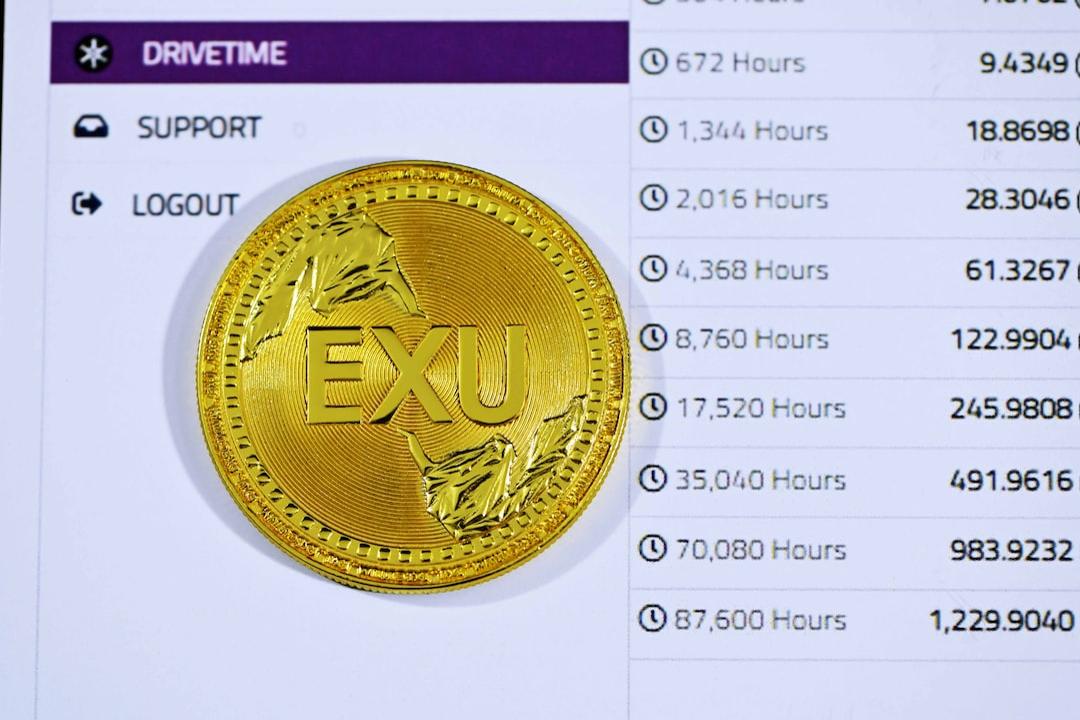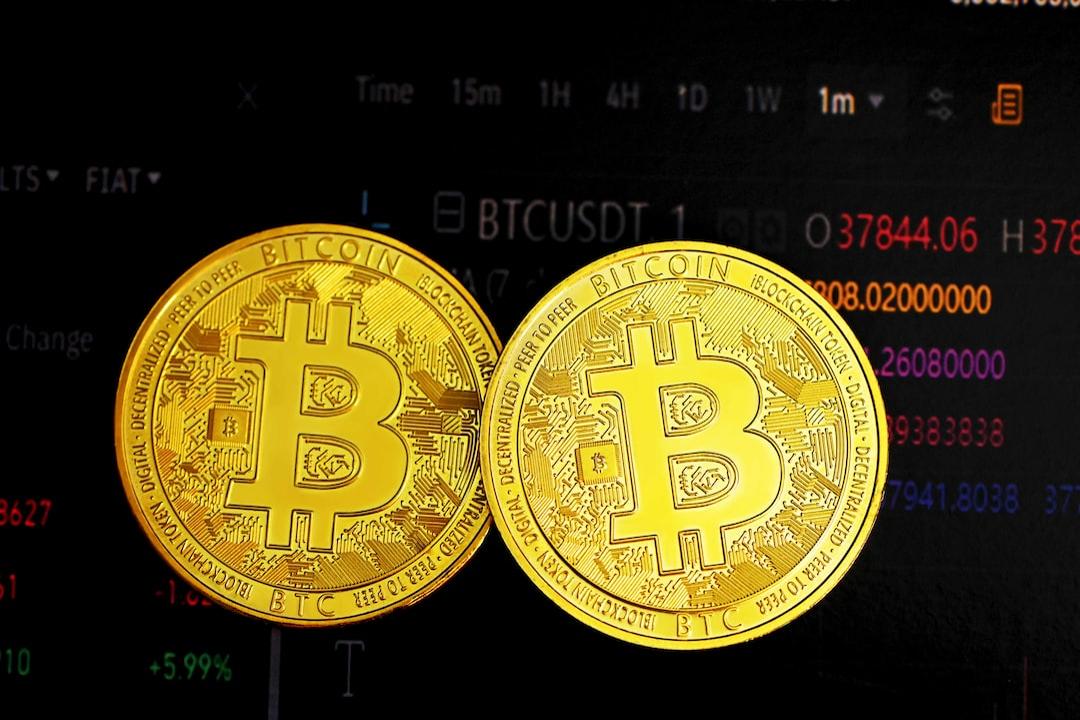Research Summary
This study investigates the threshold effect of the Crypto Fear and Greed Index (CFGI) and analyzes how market sentiment influences Bitcoin’s price trends. We examine the validity of the “buy when there is extreme fear, sell when there is extreme greed” strategy, and reveal the relationship between different thresholds and investment returns, providing data support for investment decisions.
(Background: The Psychological Barriers in Cryptocurrency Trading: How Fear and Greed Impact the Market?)
(Background Supplement: The Guide to Building Web3 Projects – Turning Arrogance, Envy, Laziness, and Greed into Your On-chain Attraction)
Study Findings Summary
This research provides an in-depth analysis of the threshold effect of the Crypto Fear and Greed Index (CFGI). Key findings include:
- The Key Role of Time Horizon: The predictive power of CFGI thresholds heavily depends on the investment time frame. Extreme fear may not be a buying signal in the short term, while extreme greed may not be a selling signal in the long term.
- The Complexity of Extreme Fear: The duration of fear has more predictive value than its absolute intensity. Extreme fear lasting 1-2 days often signals a short-term buying opportunity, 3-5 days suggests a deeper dip, and more than 14 days might indicate a long-term bottom.
- The Counterintuitive Performance of the Greed Index: Bitcoin’s strongest upswings often coincide with medium CFGI values (around 50), rather than low CFGI values, contrary to the simple “buy when afraid” logic.
- The Optimal Threshold Combination: The combination of fear ≤ 15 and greed ≥ 90 provides the highest annualized returns (62.31%), though trading opportunities are rare. The combination of fear ≤ 25 and greed ≥ 70 strikes a good balance between returns and trading frequency.
Introduction: The Investment Value of Sentiment Indicators
The cryptocurrency market is known for its extreme volatility. Compared to traditional financial markets, digital assets like Bitcoin often experience dramatic price fluctuations within short time frames, creating both opportunities for high returns and traps for many investors. In such an emotional market, the collective psychological state of investors often predicts short-term price movements more accurately than technical or fundamental analysis. This is a fundamental rule of the cryptocurrency market – human-driven price cycles.
The question, however, is: How can we objectively quantify “fear” and “greed”? More importantly, do these emotional indicators provide reliable investment signals?
This led to the creation of the Crypto Fear & Greed Index (CFGI). As a composite sentiment indicator, CFGI attempts to quantify the collective psychological state of market participants, providing a reference for investment decisions. However, like all investment tools, the critical question remains: Is it truly effective?
This article will thoroughly analyze the actual utility of CFGI as an investment tool, focusing specifically on its “threshold effect” – when the index reaches extreme values, can it provide statistically significant buy or sell signals for investors? We will rigorously examine historical data from 2018 to 2025 to test whether the widely accepted “buy when there is extreme fear, sell when there is extreme greed” strategy is truly effective.
Further Reading: “Crypto’s Narrative Economy — From the Musk Effect to the Trump Family Business”
Introduction to the Crypto Fear & Greed Index
How Does the Index Measure Market “Temperature”?
The Crypto Fear & Greed Index (CFGI) was launched in 2018 with the goal of reflecting the overall emotional state of the Bitcoin and broader cryptocurrency market using a single numerical value. The index ranges from 0 to 100, with 0 representing “extreme fear,” indicating extreme pessimism among investors, and 100 representing “extreme greed,” indicating overly optimistic market sentiment.
The calculation of CFGI is not based on a single factor but integrates data from six key dimensions, each assigned a specific weight:
- Price Volatility (25%): Comparing Bitcoin’s 30-day and 90-day average volatility. Increased volatility is typically associated with market fear.
- Market Momentum / Volume (25%): Measuring current market momentum and trading volume compared to past averages.
- Social Media (15%): Analyzing interaction rates and sentiment on platforms like X and Reddit related to Bitcoin.
- Survey Data (15%): Collecting data from X polls and other market surveys.
- Bitcoin Dominance (10%): Monitoring Bitcoin’s market share relative to other cryptocurrencies. Rising dominance may indicate fear, as investors flock to relatively safer Bitcoin.
- Google Trends (10%): Tracking search volume and keyword trends related to Bitcoin.
The combined data from these six dimensions, after being weighted, forms the final index value. The CFGI is updated every 24 hours, providing a “daily thermometer” for market sentiment.

Current Status of CFGI
Index Interpretation: The Meaning Behind the Numbers
The CFGI value is further divided into five intervals, each representing different levels of market sentiment:
- 0-24: Extreme Fear
- 25-49: Fear
- 50-74: Neutral
- 75-94: Greed
- 95-100: Extreme Greed
From an investment perspective, extreme index values (either extreme fear or extreme greed) are often seen as potential contrarian indicators. When the index falls into the extreme fear zone, the market may be overly pessimistic, suggesting that Bitcoin could be undervalued. Conversely, when the index rises into the extreme greed zone, the market may be overly optimistic, suggesting that Bitcoin could be overvalued.
CFGI vs VIX: Emotional Comparison between Cryptocurrency and Traditional Markets
CFGI is often compared to the VIX Index in the traditional financial markets. The VIX Index, also known as the “fear index,” measures implied volatility for the S&P 500 options and is widely used to gauge uncertainty in traditional stock markets.
However, there are significant differences in calculation methods and the meaning of these indices:

Compared to mature traditional financial markets, the emotional volatility in the cryptocurrency market is much more extreme. In traditional markets, a VIX above 30 might already be seen as a high volatility warning, while in the cryptocurrency world, it is not uncommon for the CFGI to shift from extreme greed to extreme fear within a month.
This extreme emotional volatility is both a feature of the cryptocurrency market and the source of CFGI’s potential value as an investment tool. This study will delve into whether these extreme emotional swings truly offer statistically significant trading opportunities for investors.
Research Methodology: A Retrospective of Historical Threshold Performance
This study analyzes data from February 2018 (when CFGI was launched) to March 2025, covering multiple bull and bear cycles of Bitcoin. We define four key emotional thresholds: extreme fear (CFGI ≤ 20), fear (CFGI ≤ 30), greed (CFGI ≥ 70), and extreme greed (CFGI ≥ 80).
When CFGI crosses these thresholds, we track the subsequent 7 days (short-term), 30 days (medium-term), and 90 days (long-term) performance of Bitcoin prices, calculating three key metrics: median return rate, win rate (percentage of positive returns), and risk-adjusted return (ξ = μ/σ).
Research Findings: The Unexpected Correlation between Market Sentiment and Returns

- Extreme Fear Is Not the Best Buying Point: When CFGI ≤ 20, Bitcoin’s performance is poor across all time frames: short-term return of -1.42% (win rate 40.21%), medium-term of -8.43% (win rate 31.96%), and long-term decline of -36.32% (win rate only 23.37%).
- Greed State Unexpectedly Shows Investment Value: When CFGI ≥ 70, Bitcoin performs strongly: short-term slight increase of 0.55% (win rate 54.31%), medium-term growth of 8.64% (win rate 70.12%), and long-term increase of 52.88% (win rate 81.54%).
- The Determining Role of Time Horizon:



Impact of Fear on Market Movements and Opportunities for Contrarian Investors
Manifested not only in the absolute value of the index but also in the duration of the fear sentiment. When the CFGI remains below 20 for consecutive days, the accumulation of emotions can lead to an oversold market, creating opportunities for contrarian investors.

Short-Term Fear (1-2 Days): Generally Brings Mild Positive Returns
When fear lasts for 3-5 consecutive days, it often accompanies significant negative returns, especially in the long term (90 days).
Prolonged Fear (Over 14 Days): Potential Market Bottom and Substantial Long-Term Returns
Prolonged panic beyond 14 days may signal the market bottom and often leads to substantial long-term returns, with a remarkable 114.8% return seen in the 90-day period following 27 days of fear.
Critical Duration: Pinpointing the Right Entry Timing
Further statistical analysis reveals a clear critical duration of consecutive days, marking a shift in the return pattern:

Short-Term Investment (7 Days): Critical Point at 2 Consecutive Days
The return rate jumps from -2.06% to 0.33%, with a winning rate of 56.25%.
Medium-Term Investment (30 Days): Similarly Critical at 2 Consecutive Days
The effect is not as significant as the short-term, but still noteworthy.
Long-Term Investment (90 Days): Critical Point at 4 Consecutive Days
This marks a significant change in return patterns.
Important Caveat
Although data shows that more than 14 days of extreme fear generally leads to substantial long-term returns, such instances are rare. Sequences with fewer than 3 samples may lack statistical significance.
The Dual Nature of Extreme Fear
Short-Term Fear (1-2 Days): May offer a short-term rebound opportunity, suitable for short-term traders.
Moderate Fear (3-5 Days): Often signals deeper declines, requiring caution from investors.
Prolonged Fear (Over 14 Days): May indicate a market bottom, providing an ideal entry point for long-term investors.
This nonlinear relationship challenges the simple “buy when there’s fear” strategy, which requires considering not just the index’s absolute value but the duration of the fear sentiment. Extreme fear is not a foolproof buy signal; its effectiveness highly depends on the duration of fear and the investor’s time horizon. Contrarian investors need more refined strategies, not just mechanically “buying when there’s fear.”
Examining Selling During Extreme Greed
A similar in-depth analysis of the extreme greed scenario, with a CFGI above 80, reveals several interesting findings.
Greed Is Not a Reliable Signal of a Market Top

During sharp rises in Bitcoin prices, the distribution of CFGI readings shows:
- Neutral sentiment (46-55) accounts for 20.4%
- Fear sentiment (26-45) accounts for 21.7%
- Extreme fear (0-25) makes up only 8.6%
- Greed sentiment (56-75) dominates at 34.0%
- Extreme greed (76-100) accounts for 15.3%
During Bitcoin’s strong rally, the market sentiment is often greedy, but not extremely so. Extreme greed is not frequently seen in bull markets, challenging the conventional notion that “extreme greed signals a market top.”
Correlation Between CFGI and Price Increases

The scatter plot above shows:
- Moderate CFGI values (around 50) are associated with the most significant price increases (150-200%).
- Lower CFGI values (25-30) typically accompany moderate price increases (20-30%).
- Higher CFGI values (around 75) show more complex patterns, with both positive (20% rise) and negative correlations (similar-sized declines).
As with the previous finding, this challenges the linear view of the market, showing that the relationship between market greed and price movements is not directly inverse. In fact, moderate market optimism (CFGI around 50) is often associated with the strongest price increases.
Comprehensive Evaluation: The Value of CFGI as a Sell Signal
Based on the above findings, the following conclusions can be drawn regarding extreme greed as a sell signal:
- Short-Term Traders: Extreme greed (CFGI ≥ 80) indeed provides valuable short-term sell signals, making it ideal for tactical reductions within 1-7 days.
- Medium-Long-Term Investors: Extreme greed is not an effective medium-long-term sell signal. Selling during this phase may miss significant upward opportunities.
- Momentum Strategy: During Bitcoin bull markets, moderate to high market sentiment (CFGI around 50-70) often accompanies the strongest rises, making it an ideal range for chasing rallies.
- Lag Effect: In some market phases, the CFGI may lag behind price movements by 1-2 days, and investors should account for this time lag when using the indicator.
Therefore, the utility of extreme greed as a sell signal is limited and highly dependent on the investor’s time horizon. For most investors, extreme greed is better used as a short-term risk management tool rather than a long-term allocation signal.
Comparative Analysis of Different Thresholds
After exploring the effects of extreme fear and extreme greed, a natural question arises: is there an ideal combination of fear and greed thresholds that maximizes trading strategy returns? We systematically evaluated the performance of different threshold combinations by constructing a “threshold – return” matrix.
Threshold Performance Matrix

Highest Yield Combination
A combination of fear ≤ 15 and greed ≥ 90 provides the highest annualized return (62.31%) and average trade return (95.11%), though trading opportunities are rare (only 3 times).
Frequency and Yield Balance
A combination of fear ≤ 25 and greed ≥ 70 strikes a good balance between trade frequency (8 times) and yield (49.98%).
Threshold Optimization Trends
- Increasing greed thresholds boost each trade’s yield but reduce frequency.
- Extremely low fear thresholds (≤15) perform best under high greed thresholds.
- Moderate fear thresholds (≤25) perform better under lower greed thresholds.
These findings suggest that the CFGI does have investment value, but its optimal application is not simply using extreme values (such as ≤20 and ≥80). Instead, it requires selecting appropriate threshold combinations based on an investor’s style: active traders may prefer the fear ≤25/greed ≥70 combination, while long-term investors may find the fear ≤15/greed ≥90 combination more suitable.
It is worth noting that the combination with the smallest sample size (fear ≤15 / greed ≥90) has only 3 trade records, so its statistical significance is limited.
Limitations and Future Research Directions
Limitations
- Sample Period Specificity: The study period (2018-2025) includes multiple Bitcoin bull and bear cycles, but the market environment and participant structure during this period may differ from future conditions.
- Overfitting Risk: Especially for threshold combinations with small sample sizes (e.g., the greed ≥90 combination with only 3-4 trades), there may be a risk of overfitting.
- Single Asset Focus: This study only analyzes the CFGI’s predictive ability for Bitcoin prices, and the results may not apply to other cryptocurrencies or traditional assets.
- Evolution of Indicator Calculation: The calculation method for CFGI may adjust over time, affecting the predictive ability of the indicator in the future.
Future Research Directions
- Integration with Technical Indicators: Exploring the predictive ability of CFGI when combined with other technical indicators (such as Relative Strength Index, Moving Averages, etc.).
- Impact of Market Structure Changes: As institutional investors enter the cryptocurrency market, studying how CFGI’s predictive ability evolves.
- Cross-Asset Application: Analyzing CFGI’s predictive ability for cryptocurrencies other than Bitcoin.
- Emotion Continuation Model: Building more refined predictive models based on CFGI’s rate of change and duration.
The extreme volatility of the cryptocurrency market presents both challenges and opportunities. Sentiment indicators provide a quantitative forecasting method, but their true value lies in their nuanced application, rather than simplified approaches. Investors should avoid blindly following “contrarian investing” and instead understand the subtle distinctions in market sentiment, aligning this understanding with their investment principles.
This report is for informational purposes only and does not constitute any form of investment advice or decision-making basis. The data, analysis, and views referenced in the article are based on the author’s research and publicly available sources, which may contain uncertainties or change over time. Readers should carefully make investment judgments based on their own circumstances and risk tolerance. For further guidance, it is recommended to seek professional advice.
References:
Gubareva, M., & Korobeinikova, A. (2023). Bitcoin market sentiment: Fear and Greed Index applications for investment strategies. Finance Research Letters, 54, 103767. https://doi.org/10.1016/j.frl.2023.103767
Li, Y., Zhang, D., Lv, T., He, K., Liang, J., & Huang, G. (2023). Investment strategy based on fear and greed index in the cryptocurrency market. SSRN Electronic Journal. https://doi.org/10.2139/ssrn.4407405


